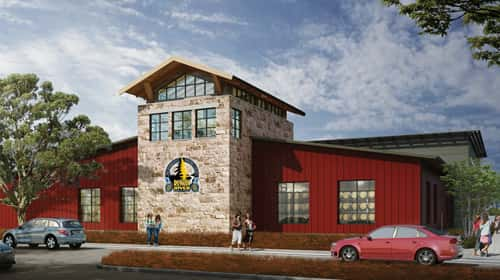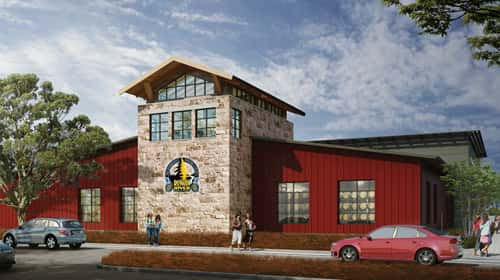 If you happen to drive down Fourth Street in Santa Rosa, chances are you’ll see a line of people around the block, waiting outside the Russian River Brewing Company. Hoping to try some of the most famous beers in the world, locals and tourists wait as long as two hours, for a chance at a bar stool, table or even a bench spot on the front patio to enjoy a cold one. Vinnie and Natalie Cilurzo spent years perfecting their fiercely desired and crafty beers, poured and produced in Sonoma County.
If you happen to drive down Fourth Street in Santa Rosa, chances are you’ll see a line of people around the block, waiting outside the Russian River Brewing Company. Hoping to try some of the most famous beers in the world, locals and tourists wait as long as two hours, for a chance at a bar stool, table or even a bench spot on the front patio to enjoy a cold one. Vinnie and Natalie Cilurzo spent years perfecting their fiercely desired and crafty beers, poured and produced in Sonoma County.
Since opening their doors for business 20 years ago, Russian River Brewing Company has made a dramatic impact on the beer world—not to mention the economy—in Sonoma County. The brewing company is notably famous for their double IPA Pliny The Elder and perpetually sought-after Pliny The Younger, a triple IPA released annually for a two-week period, beginning on the first Friday of February. More than 300,000 visitors make the pilgrimage to the holy land of hops each year. In 2016, the economic impact infused nearly $5 million into the county.
What began as a small pub, operating with one bartender and one server, has evolved into a brewery empire with a worldwide buzz, drawing visitors from around the globe.
Inspiration
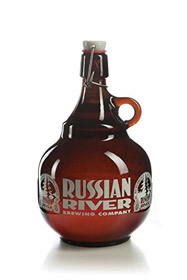 The inspiration behind the brewery was to serve a practical need. “[We] wanted a beer for the deli,” says Korbel President and Owner Gary Heck. Russian River Brewing Company was originally developed as an extension of Korbel Champagne Cellars in Sonoma County’s Russian River Valley. Vinnie Cilurzo was hired on as brew master for the new venture.
The inspiration behind the brewery was to serve a practical need. “[We] wanted a beer for the deli,” says Korbel President and Owner Gary Heck. Russian River Brewing Company was originally developed as an extension of Korbel Champagne Cellars in Sonoma County’s Russian River Valley. Vinnie Cilurzo was hired on as brew master for the new venture.
Seasoned in the wine and beer industry, Cilurzo grew up in Temecula, California where his parents owned and operated Cilurzo Family Vineyards from the late ’70s to early 2000s. As a young man, Cilurzo developed his own home-brewing skills in the basement of the family winery. In 1994, he stepped beyond the home brew and into a partnership at Blind Pig Brewing Company where he would become the first brewer to make double IPA commercially. When Vinnie accepted the job at Korbel, the Cilurzos relocated to Sonoma County. He quickly became the sole brewer, and handled all parts of productions, including bottling, filtration, deliveries and tours for the next six years.]
But Korbel was in the business of producing sparkling wine, not beer, and according to Heck it just wasn’t part of their core business. In 2003, Korbel left the beer business behind and focused on what it does best: produce sparkling wine. Since the brew master position would no longer be needed, Heck offered Vinnie the established brand name, and that was the beginning of the new Russian River Brewing Company. “I was thankful to Gary for that,” he says. “We wouldn’t be where we’re at without his generosity.”
Soon after, the Cilurzos opened a pub on Fourth Street in 2004 with a production brewery to follow in 2008. The brand, which had a small, local following, was helpful, says Vinnie. “Otherwise we would have been starting out from scratch.” Little did the husband-wife team know, they would soon be taking over the beer world, one pint at a time.
The Pliny takeover
 Considered to be one of the “best” beers in the world, Pliny The Elder and its hoppy, more attainable compared to the Younger, started a worldwide frenzy for the pub. “It was organic,” says Cilurzo of the enormous success and recognition Russian River Brewing Company made for itself. Working 80 to 100 hours per week, the Cilurzos slowly produced more and more Pliny. “It happened so slowly, it was much like watching your kid grow.”
Considered to be one of the “best” beers in the world, Pliny The Elder and its hoppy, more attainable compared to the Younger, started a worldwide frenzy for the pub. “It was organic,” says Cilurzo of the enormous success and recognition Russian River Brewing Company made for itself. Working 80 to 100 hours per week, the Cilurzos slowly produced more and more Pliny. “It happened so slowly, it was much like watching your kid grow.”
Early one morning in 2010, the Cilurzos realized they were making an impact in the beer world. Vinnie arrived at his Santa Rosa brewpub as usual to prepare his beers for another day of filling pints and growlers. “There were people already lined up,” he says. “I went outside and asked, ‘What are you doing here?’” he recalls. They told Vinnie they were waiting for Pliny The Younger. Taken by surprise of the forming line in front of the brewery, Vinnie reminded the crowd that the doors wouldn’t open for another four hours. The crowd didn’t mind. They informed Vinnie that Pliny the Younger was rated one of the top beers in the world. He was less than prepared for the surge of business quickly approaching, and called Natalie. “You better start calling employees who aren’t scheduled because I think it’s going to be busy today,” he told his wife. That day, Russian River Brewing Company sold out its entire inventory in an eight-hour shift including ten-ounce pours and growlers, says Vinnie. “That changed our lives forever.”
Difficult and expensive to produce, world famous and winner of 2009’s “Best Beer in the World” by Beer Advocate, Pliny The Younger triple IPA can only be enjoyed at the pub on draft. The supply is limited, and you’re lucky to tilt back a pint in the winter after standing in an eclectic line of both international and local hopefuls. The double IPA, Pliny The Elder, is also available on draft as well as in bottles year-round. The brewery put Santa Rosa on the map, drawing thirsty crowds and boosting the economy at the same time.
Worldwide recognition
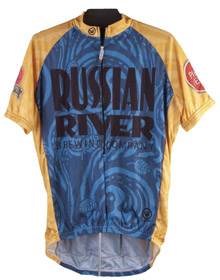 In 2016, the Sonoma County Economic Development Board (EDB) conducted a study on the release of Pliny The Younger during its two-week run. With 16,000 customers in attendance, the economic impact generated by travelers from outside Sonoma County specifically for the beer release reigned in $5 million. In addition, of the travelers surveyed from 40 states, 418 cities, 11 countries and 15 foreign cities, 92 percent say they would return to Santa Rosa in the future.
In 2016, the Sonoma County Economic Development Board (EDB) conducted a study on the release of Pliny The Younger during its two-week run. With 16,000 customers in attendance, the economic impact generated by travelers from outside Sonoma County specifically for the beer release reigned in $5 million. In addition, of the travelers surveyed from 40 states, 418 cities, 11 countries and 15 foreign cities, 92 percent say they would return to Santa Rosa in the future.
Keeping their own score at the Santa Rosa pub, hostesses surveyed each guest in attendance for the two-week period, marking a spot on a map for every country a patron traveled from. “It was fun to come in every morning and check the map and see what’s changed,” said Cilurzo of the international draw. “Someone visited from an island in the middle of the ocean that was so small the thumbtack covered the entire island.”
A new facility
The brewery continues to draw locals and visitors from around the globe, and construction is underway for a new 85,000-square-foot facility on 15 acres in Windsor, scheduled to open in the fall of 2018. “We’re banking on the good name of Sonoma County for our new facility and to be a bigger draw,” says Cilurzo.
The new location, designed by local architect firm, Archilogics, will be less like a local pub, and more like an interactive adult beer sanctuary. Of the 15 acres, four of them are conservation wetlands, which will remain undeveloped. The remaining acres will hold the new facility, replacing the current production brewery about one mile from the Fourth Street pub, and 20,000 square feet will be exclusively used as hospitality and office space. The new location will also feature a separate tasting room, a second brewpub along with a full kitchen and a larger gift shop. Visitors can also enjoy guided and self-guided tours.
A larger facility begs the question: Will more Pliny be produced? “Yes. We will make more Elder and Younger,” says Cilurzo. “We’ll do the release at both breweries. Beyond that I’m not sure how we’ll pull it off,” says Cilurzo.
Funky brew
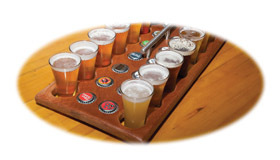 Sour beer is intentionally brewed acidic, giving it a tart taste. And it’s what Cilurzo calls “funky beer,” but it also presents challenges. It can be risky, says Cilurzo, because of its uncontrollable nature, which is why they’re building the new facility. “One of the reasons we’re building the brewery is to isolate the sour beer,” Cilurzo says about the 15,000 square foot “funky brewery,” which will be kept separate from the “non funky” beers such as Pliny and Damnation.
Sour beer is intentionally brewed acidic, giving it a tart taste. And it’s what Cilurzo calls “funky beer,” but it also presents challenges. It can be risky, says Cilurzo, because of its uncontrollable nature, which is why they’re building the new facility. “One of the reasons we’re building the brewery is to isolate the sour beer,” Cilurzo says about the 15,000 square foot “funky brewery,” which will be kept separate from the “non funky” beers such as Pliny and Damnation.
What’s funky beer? According to Cilurzo, the yeast and bacteria during this brewing process can be airborne after a day of making sour beers. “Building the separate facility is a more efficient way of making the beers, and a really cool part of the customer experience.”
As part of the guided tour, guests will walk over a bridge and see down into the barrels. “Guests can smell, get the sensory component of the barrels, look into the funky cellar and even walk over to the ‘koelschip,’” Cilurzo explains. The koelschip is a shallow and wide, open-top tank that pumps unfermented beer (wort) into the koelschip hot, not cold. In a regular brewing process, the wort is cooled down so the yeast can be added, otherwise it would be too warm for the yeast and would ferment. In Cilurzo’s funky brew process, he pumps the hot wort into the shallow vessel, which will be above in the tower on the east end of the building and only during the winter. “All the windows are operable, the fans are up in the roof,” he says. “When you open all the windows and turn the fans on, it will bring in cold air to cool the wort down and the wild yeast in the air will be native Sonoma County yeast and will ferment the beer.”
These spontaneous beers are already made at the Santa Rosa pub, but the elaborate process will be a new feature at the facility in Windsor.
From wine barrel to beer
Cilurzo has developed a unique and complex process for his sour beers, and is one of the first American brewers to incorporate wine barrels into the brewing program. Cleverly named after the Lambic-style beer produced in Belgium, his Sonoma County inspired “Sonambic” beers, the brewery’s term for “100-percent spontaneous fermented beer,” subject the barrels to native Sonoma County yeast. Cilurzo uses wine barrels, which are three to five years old, from local wineries for the beers aging process. The wineries are done with the barrels at this point, resulting in most of the oak flavor being extracted. “We don’t want them as much for the oak,” Cilurzo explains. “We want just a little bit of the oak or whatever tannins are left. And we also want them for the wine flavor that’s impregnated into the wood. We also use the barrels to harbor the microorganisms that make the sour beers funky and give it that flavor.”
Using the barrels to harbor the microorganisms that make the sour beers sour, funky and flavorful, Cilurzo also uses Brettanomyces, wild yeast, in the batch. In the wine industry, Brettanomyces “are the devil,” says Cilurzo. “Because you can’t control it and it reduces the fruitiness in the wine, it ends up being bad for the wine. Brettanomyces can be nice in the right amounts and be floral and fragrant.” Is it as risky for the beer making process as it is for wine? “It is, but we have all the separate equipment: hoses, pumps, fillers, gaskets, valves, you name it.”
The idea behind Cilurzo’s process is matching a specific beer recipe with what was once in the barrel. Russian River’s first barrel aged beer was Temptation, a blonde ale aged in Chardonnay barrels. Pinot Noir barrels are used for their brown ale, Supplication, and Cabernet Sauvignon barrels for their barrel-aged dark ale, Consecration. The Beatification beer is 100 percent spontaneously fermented, not adding yeast. It goes through the koelschip process collecting any wild yeast and bacteria in the room. Once it ages and ferments wildly, the outcome is a spontaneous, fermented sour. Releasing the newest batch this summer in 2017, Cilurzo says, “It’s probably the best batch we’ve ever made.”
The hop father
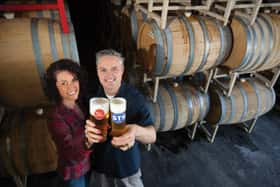 Fathering a dynamic family of unique beers, it’s no surprise Cilurzo is known as the “Hop Father.” When Matt Brynildson, brew master at Firestone Walker Brewery, nick named Cilurzo by the hoppy title, he may not have expected it to be the name of an exclusive and somewhat secret beer, occasionally on tap at the Santa Rosa pub. “We have a beer called Hop Father. No one knows about it. It has a local cult following. I brew it whenever I decide,” says Cilurzo of the American IPA not marketed or on a schedule by the brewery but a lucky treat that locals can indulge in if they are at the pub at the right time.
Fathering a dynamic family of unique beers, it’s no surprise Cilurzo is known as the “Hop Father.” When Matt Brynildson, brew master at Firestone Walker Brewery, nick named Cilurzo by the hoppy title, he may not have expected it to be the name of an exclusive and somewhat secret beer, occasionally on tap at the Santa Rosa pub. “We have a beer called Hop Father. No one knows about it. It has a local cult following. I brew it whenever I decide,” says Cilurzo of the American IPA not marketed or on a schedule by the brewery but a lucky treat that locals can indulge in if they are at the pub at the right time.
A brand new beer, Scratching Post, is a Belgian blonde ale that has only been brewed twice and is now available at their pub. With 4.5 percent alcohol, the beer has nice fruity notes, according to Cilurzo. It’s pretty hoppy, with a crisp, dry bitterness, he says, and derived from yeast he stumbled across from home brewer. Why the name? “Natalie and I are cat people. We have three cats.”
Guests can also look forward to the STS Pils, named after Sonoma County’s airport code and only available on draft in the Santa Rosa pub, to be bottled once the new facility opens. “We’re super excited to bottle on a regular basis. Right now it’s on tap full time, but we’ll bottle it whenever we can,” says Cilurzo of the upcoming efforts in increasing bottling of popular beers.
Prospero, a local bottling line company, is two blocks from the new Windsor Facility and will be the company supplying the brewery’s new bottles. Using state-of-the-art bottling, the same look and bottles will be produced with the added bonus of being local.
Giving back
The Cilurzos have made a positive impact on much more than the craft brew world. They prioritize the importance of hosting charity events, give back to the community by supplying locals with jobs and contribute to programs in place for future brewers. “We believe in giving back,” says Cilurzo. Accommodating as much as possible, you can find Vinnie presenting at craft brewers conferences and national conferences from time to time. “It’s about putting your money where your mouth is and having programs in place,” he says.
Every October, the brewery hosts a major fundraiser for the local Sutter Breast Cancer Center. In one month, they’ve raised as much as $100,000 for the charity. Exclusively for the annual fundraiser, a special beer is made: Framboise For a Cure. The beer has a signature pink hue from the fresh raspberries added, and a tart raspberry flavor. Made once a year specifically for the month long fundraiser, 100 percent of the proceeds go to aiding local men and women in the fight against breast cancer. With the help of other local businesses such as Bike Peddler in Santa Rosa, donating a bike annually for the raffle as well as a local guitar maker who donates a hand made guitar, the fundraiser is an anticipated event in the community. “You can’t do everything, but we do what we can. We try to give back whenever we can.”
Mindful of the community their business is centered in, the Cilurzos make their employees a priority, and realize the cost of living in Sonoma County makes it difficult to live and work here. With 100 employees currently in place, that number is expected to double once the Windsor facility opens. “We will instantly create 100-plus jobs with the new location. We have many employees that have been able to buy houses and create a living in Sonoma County, an area not easy to live in. It’s probably our biggest concern in the big picture,” Cilurzo says, of the effort to bring in and retain employees in an area with some of the highest living costs in America.
Staying local
Staying local and working for themselves, the future of Russian River Brewing Company is much like their beers: bright, bold and risky. “Risk and reward. We can’t build what we’re going to build without taking a risk.” With half of their beer sold directly at the pub, they don’t distribute much. Currently, their beer is available in only four states, and Vinnie doesn’t anticipate selling to the international market. “Once you send the beer off, is anyone watching out for it? I already worry about the beers, making sure Pliny is always kept cold.”
Gaining worldwide recognition, the pub has put Santa Rosa on the map for beer lovers as Napa did for its wine. Ben Stone of the Sonoma County Economic Development Board says, “Natalie and Vinnie are the Mondavi’s of Sonoma County.” He says, “What Robert Mondavi was for wine in Napa Valley, Vinnie Cilurzo is of craft beer in Sonoma County.”
The beer that originated in a deli, and turned into an international sensation, is only growing. Did Heck ever anticipate this kind of success from the brew company that started at Korbel Cellars? “No,” says Heck. “Vinnie and Natalie have done a marvelous job. Their downtown location has provided a much more beer-friendly crowd, and the gold medals and awards were way beyond my dreams. I wish them the best of luck at the new facility. They’re going to do great.”
Meanwhile, the Cilurzos continue to grow their Sonoma County beer empire, keeping the taps flowing and the bar stools full for locals and tourists.


